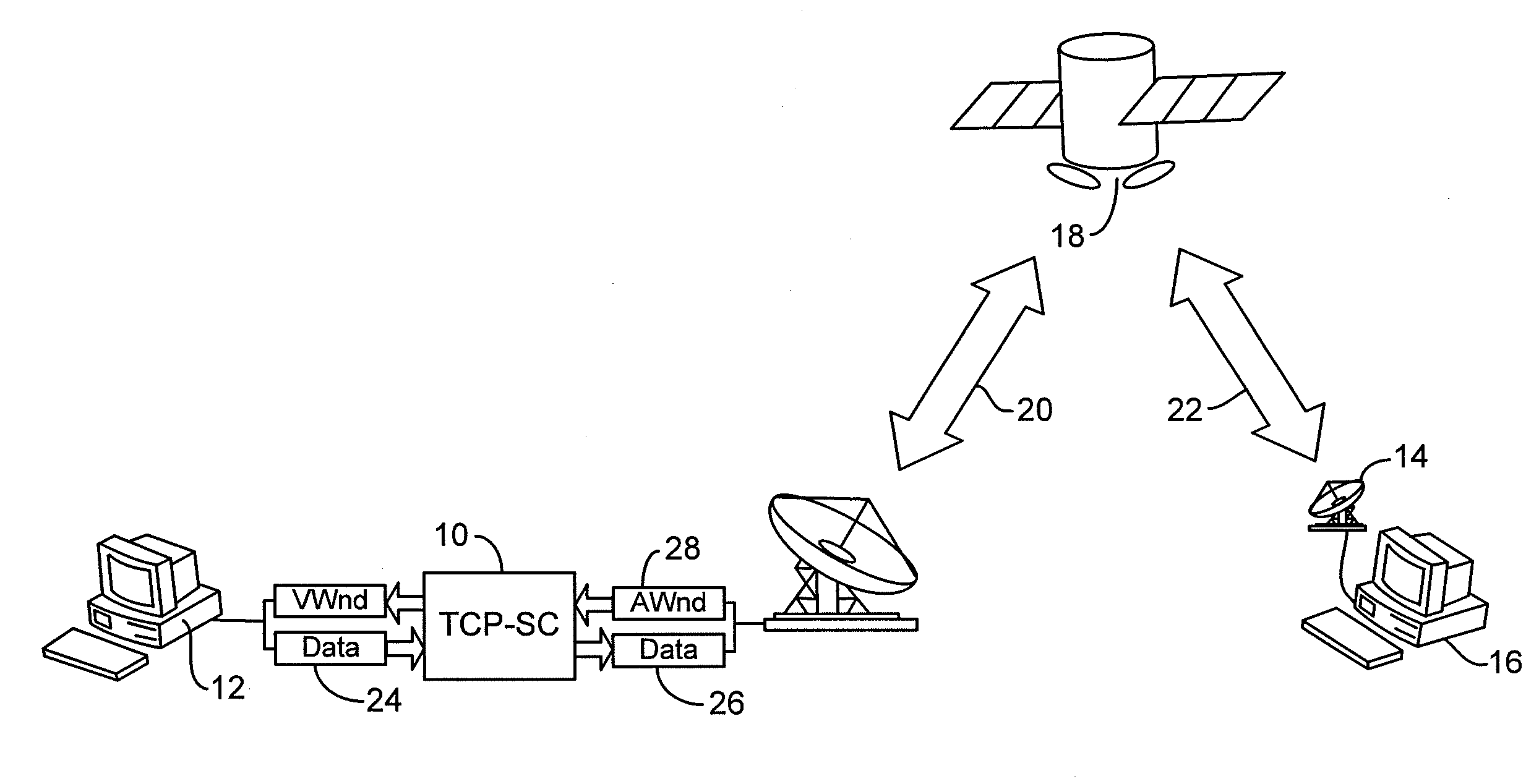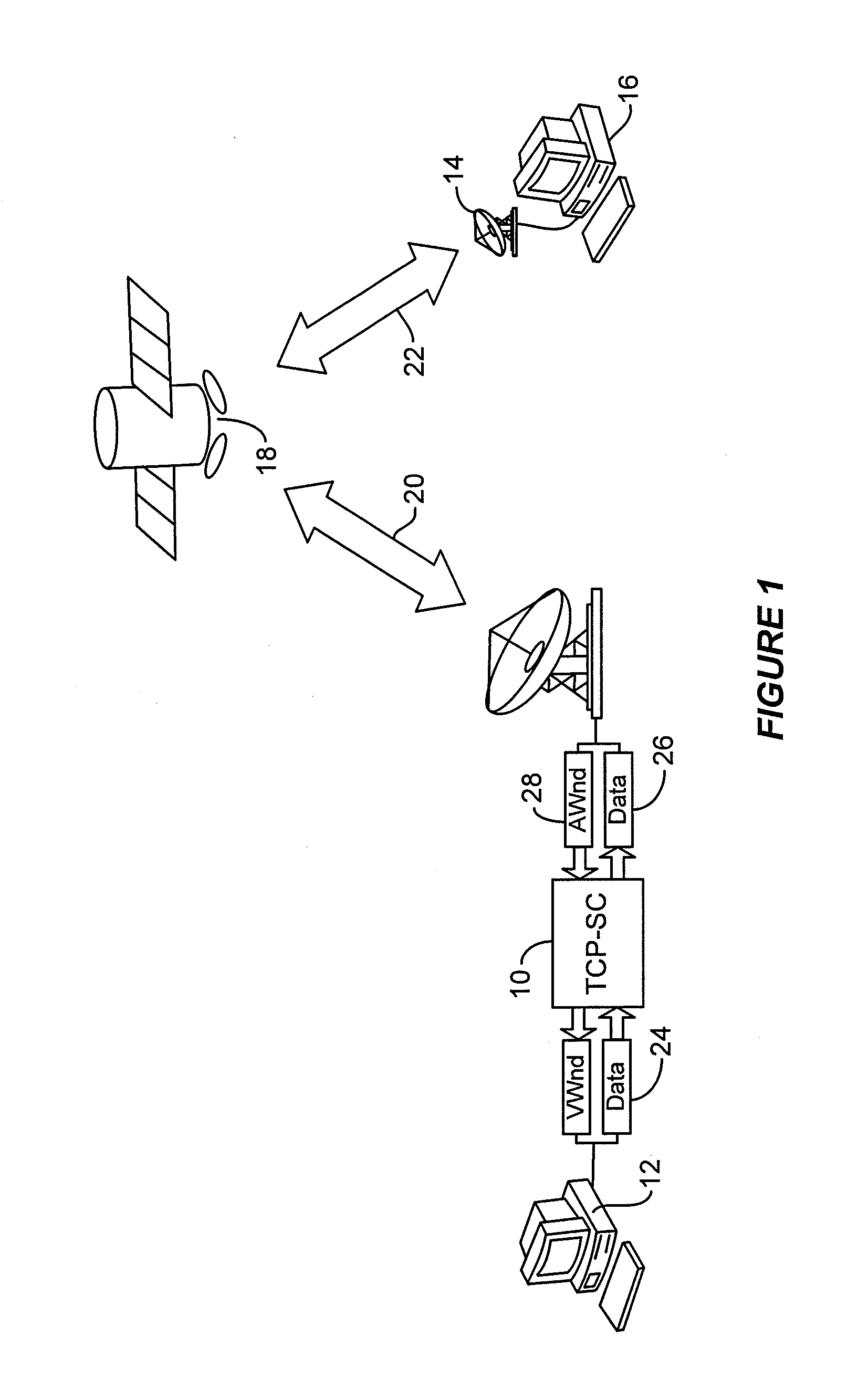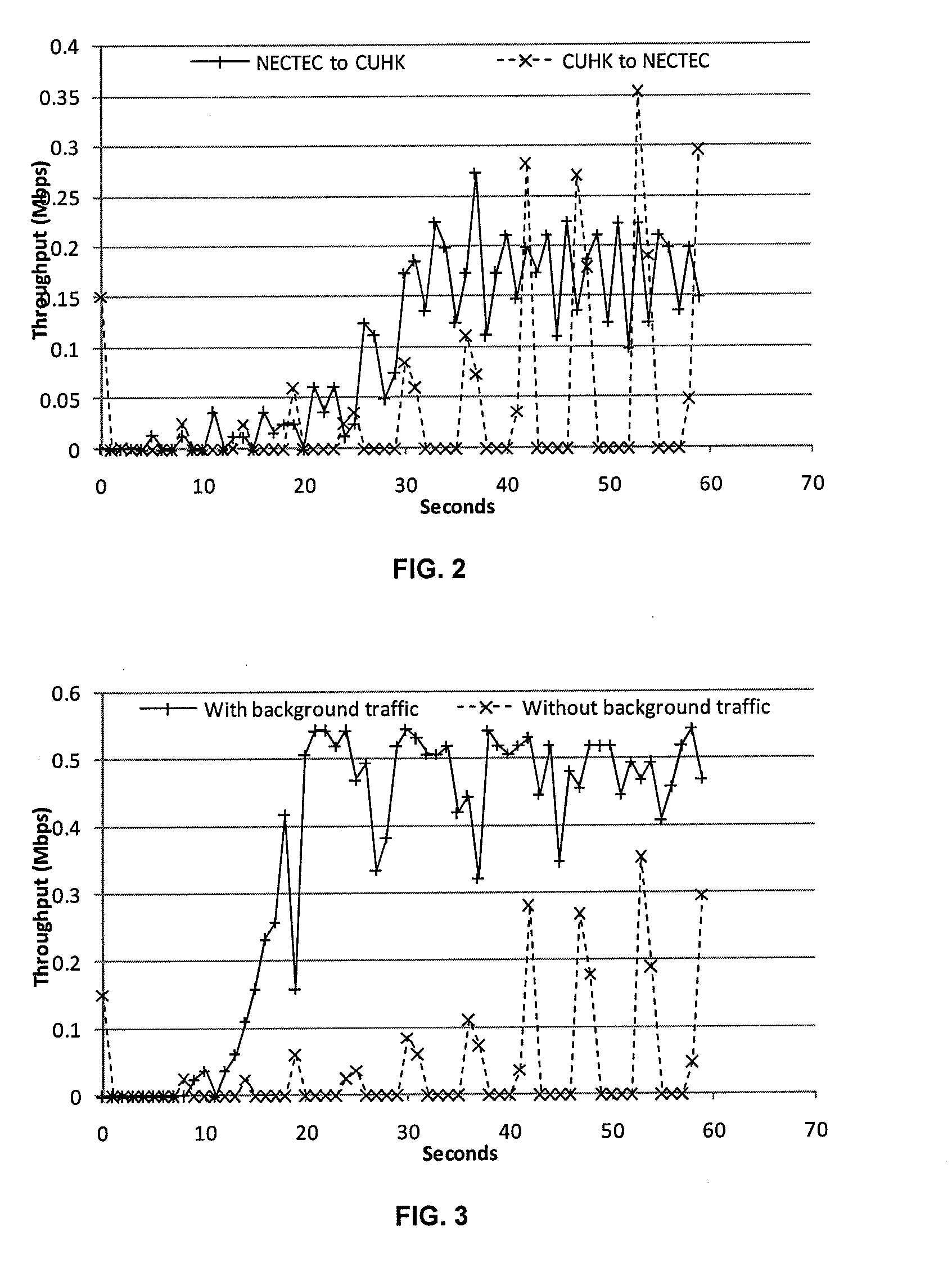Network Traffic Accelerator
a network traffic and accelerator technology, applied in the field of digital data communication, can solve the problems of de facto standard for transmitting data over networks, transmission control protocols (tcp), performance bottlenecks, and inability to perform well in satellite or mobile communication networks, etc., and achieve the effect of ready-to-us
- Summary
- Abstract
- Description
- Claims
- Application Information
AI Technical Summary
Benefits of technology
Problems solved by technology
Method used
Image
Examples
Embodiment Construction
[0023]According to the invention, a communication system has a TCP-SC gateway system 10. The inventive TCP-SC gateway system 10 is disposed between a sender, such as a web server 12, and a receiver 14 comprising a TCP buffer at a user terminal, such as a web browser client 16, as shown in FIG. 1. All Internet Protocol (IP) packets are routed through the TCP-SC gateway 10 before forwarding to the receiver 14 via a satellite 18. Thus in the case of a satellite system, the path between the gateway system 10 and the client 16 is a large BDP path comprising link segments 20 and 22. The TCP-SC gateway system 10 filters out TCP packets for processing and simply forwards all other packets to maintain compatibility with other traffic (e.g., UDP-based protocols).
[0024]The principle of TCP-SC is to estimate the receiver's TCP buffer availability at the time the to-be-forwarded TCP segment arrives at the receiver 14. If the estimated TCP buffer availability is sufficiently large to accommodate ...
PUM
 Login to View More
Login to View More Abstract
Description
Claims
Application Information
 Login to View More
Login to View More - R&D
- Intellectual Property
- Life Sciences
- Materials
- Tech Scout
- Unparalleled Data Quality
- Higher Quality Content
- 60% Fewer Hallucinations
Browse by: Latest US Patents, China's latest patents, Technical Efficacy Thesaurus, Application Domain, Technology Topic, Popular Technical Reports.
© 2025 PatSnap. All rights reserved.Legal|Privacy policy|Modern Slavery Act Transparency Statement|Sitemap|About US| Contact US: help@patsnap.com



